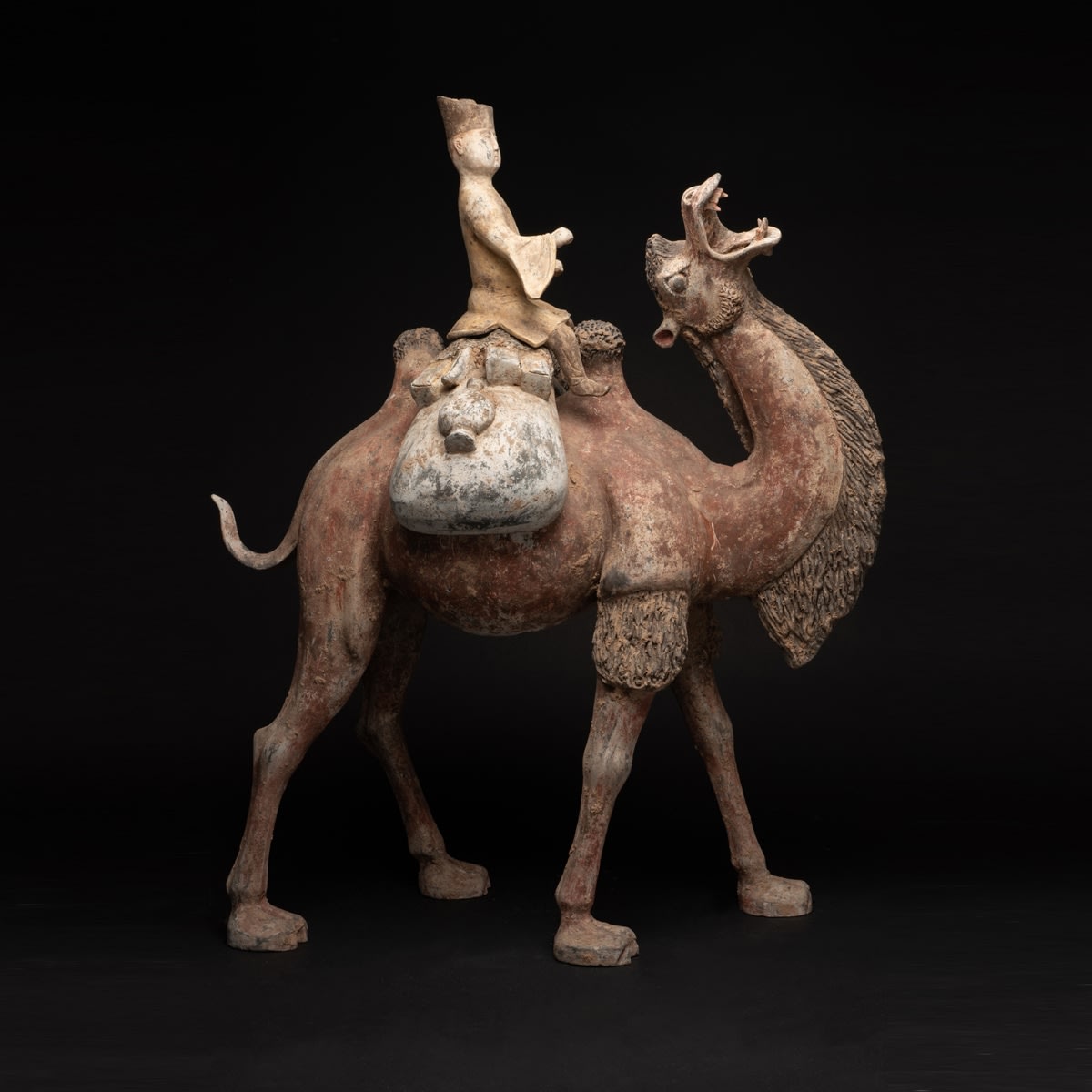Tang period terracotta camel and rider, 618 CE - 906 CE
Terracotta
RL.0953
Further images
The camel, with head raised and braying though an open jaw as it is rapidly moving forwards on its four legs, the coat covered with dark chestnut paint, the two...
The camel, with head raised and braying though an open jaw as it is rapidly moving forwards on its four legs, the coat covered with dark chestnut paint, the two humps highlighted by the removable saddle.
Although the camel is not an animal native to China, representations of the two-humped Central Asian camel are frequently found in Chinese ceramic tomb figurines.
This pack animal was an indispensable carrier of goods on the Silk Road that linked China with the regions and trade to Central Asia, India, Persia, Africa, and southeastern Asia. Traders often used camels to travel the Silk Road and carry their goods from one place to another because these animals could travel a long distance without the need of water. Ceramists of tomb figurines often created in clay entire caravans of double-humped camels from Bactria (modern-day Afghanistan) that carried in their saddle bags goods along the Silk Road. Bactrian camels can travel up to 30 miles a day, carry hundreds of pounds, and go for more than a week without water. They can endure very hot and very cold temperatures, which allowed them to travel across the forbidding deserts and the high mountain ranges that extend west from China into Central Asia.
Although the camel is not an animal native to China, representations of the two-humped Central Asian camel are frequently found in Chinese ceramic tomb figurines.
This pack animal was an indispensable carrier of goods on the Silk Road that linked China with the regions and trade to Central Asia, India, Persia, Africa, and southeastern Asia. Traders often used camels to travel the Silk Road and carry their goods from one place to another because these animals could travel a long distance without the need of water. Ceramists of tomb figurines often created in clay entire caravans of double-humped camels from Bactria (modern-day Afghanistan) that carried in their saddle bags goods along the Silk Road. Bactrian camels can travel up to 30 miles a day, carry hundreds of pounds, and go for more than a week without water. They can endure very hot and very cold temperatures, which allowed them to travel across the forbidding deserts and the high mountain ranges that extend west from China into Central Asia.





